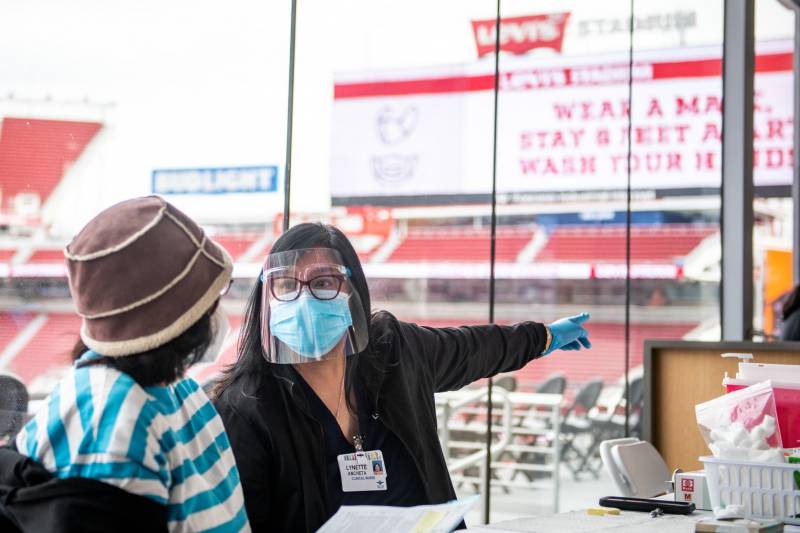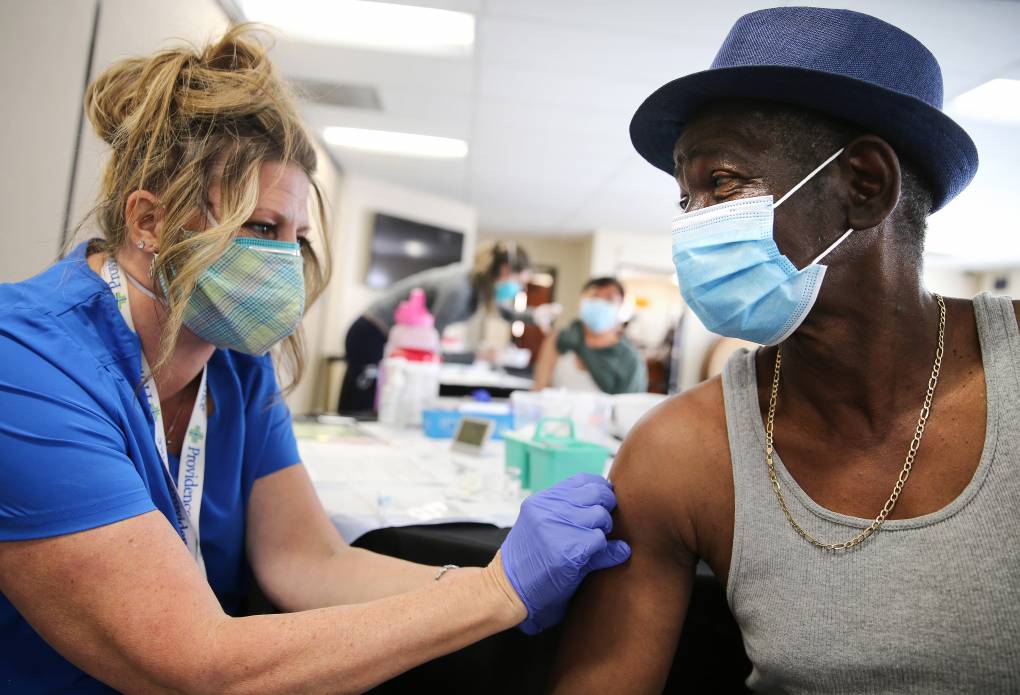The latest analysis from the COVID-19 Scenario Modeling Hub, a consortium of researchers advising the Centers for Disease Control and Prevention, suggests that cases and deaths nationwide likely will decline steadily now through the spring without a significant winter surge.
The modelers developed four potential scenarios, taking into account whether or not childhood vaccinations take off and whether a more infectious new variant should emerge.
Hub researchers shared with NPR that the most likely scenario is that children under 12 get vaccinated and no new super-spreading variant emerges. In that case, the combo model forecasts that new infections would slowly, but fairly continuously, drop from about 140,000 a day now to about 9,000 a day by March 2022.
Deaths from COVID-19 would fall from about 1,500 a day now to fewer than 100 a day by March 2022.
That’s around the level U.S. cases and deaths were in late March 2020 when the pandemic just started to flare up in the U.S. That scenario is also better compared to this summer when many thought the pandemic was waning.
While this may provide relief to some, researchers from the modeling hub and public health experts in the Bay Area present a clear caveat: The model makes several assumptions, and multiple existing variables could throw it all off.
“Any of us who have been following this closely, given what happened with delta, are going to be really cautious about too much optimism,” said Justin Lessler, researcher with the University of North Carolina, who helps run the hub.
Lessler is especially worried about Pennsylvania, for example, and he notes that in some Western states like Idaho and Utah, there’s a risk of resurgence.
Even California could lose the hard-fought progress it’s made against the pandemic.
“What we’ve seen at many moments during the pandemic is that California, as a state, is doing better than the country as a whole,” said Dr. Joshua Salomon, professor of health policy at Stanford, adding that the Bay Area is doing better than the rest of the state.
According to the CDC, California is reporting 94 cases per 100,000 residents and fits into what the public health agency considers “substantial” coronavirus transmission.


